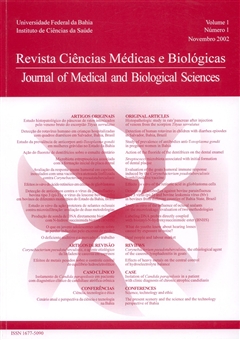Effects in vitro of the retinoic acid in glioblastoma cells
DOI:
https://doi.org/10.9771/cmbio.v1i1.4107Keywords:
Retinoic acid, glioma, apoptosis, differentiation, RARAbstract
Malignant gliomas are highly invasive, rapidly proliferating tumors and present a poor prognosis. In this study, we investigated the potential effects of the retinoic acid (RA) on a high proliferative glioblastoma cell line, GL-15. The exposure to a single dose of t-RA reduces the cell growth, induces a transitory stage of the cell differentiation, and it finally leads to the apoptotic cell death depending on the RA concentration range and the time of exposure. We found that the GL-15 cells express constitutively the RARs isotypes a, b and g, and that RARa1/2, RARb2, and RARg2 expressions are induced by t-RA. These results suggest that the ratio of RAR isoforms may be a crucial element for inducing either efficient differentiaton or apoptotic effects in those cells. Furthermore, they suggest that the use of ligands specific to each receptor isotype might be relevant for further glioma therapies.Downloads
Download data is not yet available.
Downloads
Published
2002-01-02
How to Cite
Costa, S. L., Riche, D., Fages, C., Rochette Egly, C., & Tardy, M. (2002). Effects in vitro of the retinoic acid in glioblastoma cells. Journal of Medical and Biological Sciences, 1(1), 49–60. https://doi.org/10.9771/cmbio.v1i1.4107
Issue
Section
ORIGINAL ARTICLES
License
The Journal of Medical and Biological Sciences reserves all copyrights of published works, including translations, allowing, however, their subsequent reproduction as transcription, with proper citation of source, through the Creative Commons license. The periodical has free and free access.


